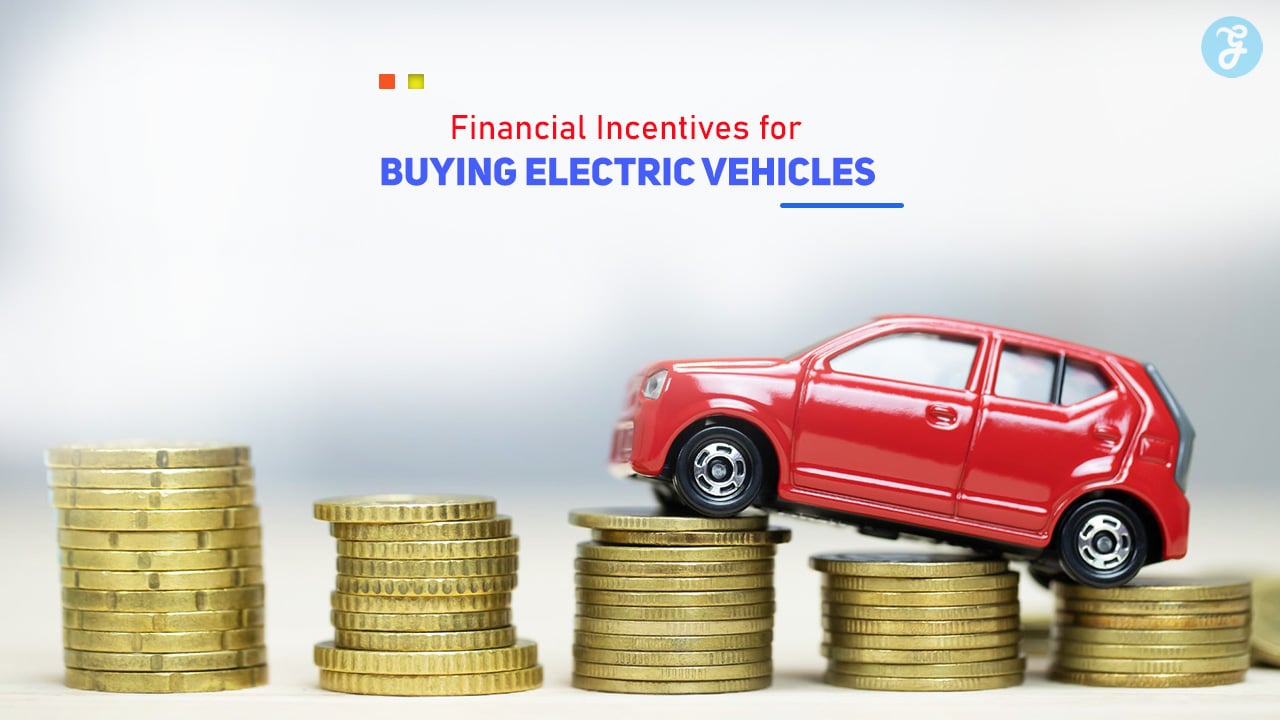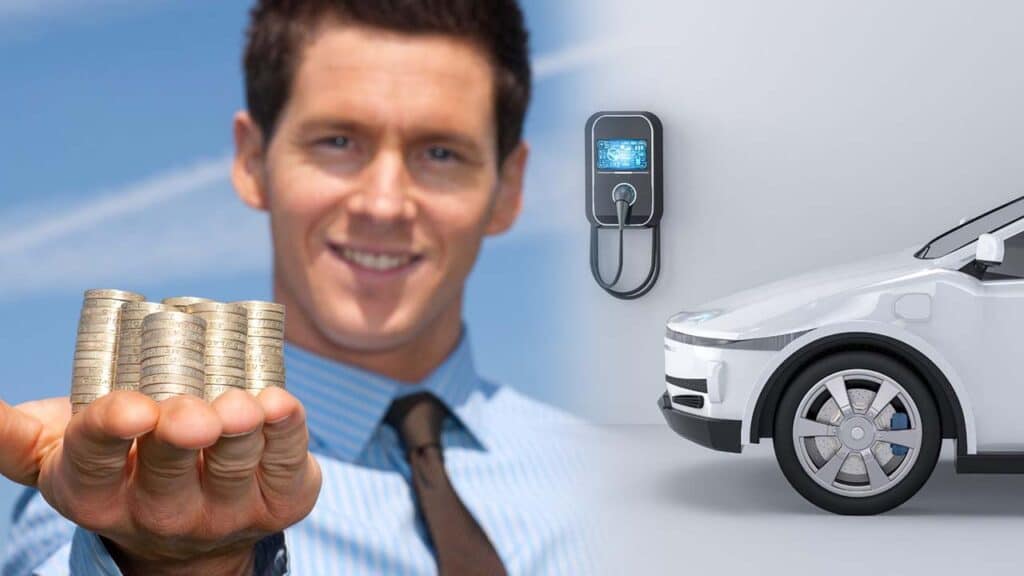Electric vehicles (EVs) are becoming increasingly popular as more consumers prioritize sustainability, fuel efficiency, and innovative technology.
While EVs offer benefits like reduced fuel costs and fewer emissions, the upfront cost can sometimes be daunting for potential buyers.
Governments, utility companies, and organizations around the world are responding to this by offering a variety of financial incentives to make EV ownership more attainable. These incentives not only help offset the initial cost but also encourage consumers to adopt greener, more sustainable modes of transportation.
In this comprehensive guide, we’ll explore 12 significant financial incentives available for buying electric vehicles.
From federal and state tax credits to reduced toll fees and special financing options, each of these incentives can provide meaningful savings that make the transition to electric even more appealing.
12 Financial Incentives for Buying Electric Vehicles
Let’s take a look at its benefits.
| Incentive Type | Benefit |
| Federal Tax Credits | Up to $7,500 in tax savings |
| State Rebates | Additional rebates or sales tax exemptions |
| Utility Company Rebates | Reduced cost of home charging solutions |
| HOV Lane Access | Time savings through carpool lane access |
| Reduced Registration Fees | Lowers long-term ownership costs |
| Home EV Charger Credits | Offset installation costs for home chargers |
| Fleet Grants for Businesses | Financial aid for commercial EV fleets |
| Workplace Charging Incentives | Support for installing workplace chargers |
| Financing Assistance Programs | Low-interest loans and leasing options |
| Reduced Toll Fees | Cost savings on toll roads |
| Business Depreciation Deductions | Tax savings for commercial EVs |
| Used EV Incentives | Rebates and support for pre-owned EVs |
1. Federal Tax Credits for Electric Vehicles
One of the most popular incentives for EV buyers in the United States is the federal tax credit, which provides substantial savings on your tax bill and is often one of the largest incentives available. This credit makes a significant impact on the overall affordability of purchasing an EV.
- How It Works: The federal tax credit allows you to claim up to $7,500 on your tax return for qualifying electric vehicles. The exact amount depends on the vehicle’s battery size and the manufacturer’s sales history. For instance, full battery electric vehicles (BEVs) generally qualify for higher credits than plug-in hybrids with smaller batteries.
- Eligibility: This credit applies to new EV purchases from eligible automakers. However, the credit is phased out for manufacturers once they’ve sold a certain number of units. For example, Tesla and General Motors have reached this limit, so their vehicles no longer qualify.
- Important Consideration: It’s worth noting that the federal tax credit is non-refundable, meaning it can only reduce your tax liability. For example, if you owe $5,000 in federal taxes, you can only apply that amount toward the credit, even if you qualify for the full $7,500.
| EV Model | Potential Tax Credit |
| Tesla Model S | $0 (credit phased out) |
| Nissan Leaf | Up to $7,500 |
| Chevrolet Bolt | $0 (credit phased out) |
| Ford Mustang Mach-E | Up to $7,500 |
Why It Matters
The federal tax credit provides substantial savings for eligible EVs, making electric vehicles more accessible and competitive with traditional gas-powered cars. This can make a significant difference in the total cost of owning an EV, especially for buyers concerned about the higher initial investment.
2. State-Level EV Incentives
Alongside federal tax credits, many states offer their own incentives for EV purchases, which can include rebates, tax credits, and grants. These incentives vary widely, but they often add an extra layer of savings for prospective EV buyers.
- Rebates: Some states, such as California, Colorado, and New York, offer rebates ranging from $2,000 to $5,000 for the purchase of an EV. These rebates are usually issued after purchase, helping offset the upfront cost.
- Sales Tax Exemptions: Certain states, like New Jersey, exempt EVs from state sales tax, which can save buyers hundreds or even thousands of dollars.
- Income-Dependent Incentives: Some states, like California, offer additional rebates or incentives for lower-income buyers, making EVs even more affordable for individuals and families who might not otherwise consider them.
| State | Incentive Type |
| California | Rebate up to $4,500 |
| New Jersey | Sales tax exemption |
| Colorado | Tax credit up to $4,000 |
Why It Matters
State-level incentives are a powerful way to add additional savings on top of federal tax credits, helping to make EVs more accessible to a broader demographic. This approach also reflects each state’s commitment to sustainability, encouraging residents to adopt cleaner transportation options.
3. Local Utility Company Rebates
Rebates and Credits from Utility Providers
Local utility companies in many parts of the United States are joining the push for sustainable transportation by offering financial incentives for EV buyers. Utility rebates are often focused on charging solutions, but they can also apply directly to EV purchases.
- Rebate Amounts: Utility company rebates can vary widely, ranging from $200 to as much as $1,500 depending on the company and location.
- Charging Station Installation Support: Many utilities also provide rebates for home charging station installations. This includes installation cost support and discounted equipment, making home charging more affordable.
- Special EV Rates: Some utility companies offer time-of-use rates that allow EV owners to charge their vehicles at reduced rates during off-peak hours, helping reduce overall charging costs.
| Utility Company | Rebate Amount |
| Southern California Edison | Up to $1,000 |
| Pacific Gas and Electric | Up to $800 |
| Xcel Energy | Up to $500 |
Why It Matters
Utility rebates help make the cost of EV ownership more manageable, especially when it comes to setting up a home charging solution. This financial support also aligns with long-term savings on electricity costs, creating a more budget-friendly path to sustainable transportation.
4. HOV Lane Access
In many regions with heavy traffic, High Occupancy Vehicle (HOV) lane access can be a major perk for EV owners. EV drivers are often granted access to these carpool lanes, even when driving solo.
- How It Works: Qualified EVs are given special decals or stickers that allow them to access HOV lanes, significantly reducing commute times during peak hours.
- Availability: States like California, New York, and Virginia offer HOV lane access for EV drivers, providing substantial time savings for those commuting in congested areas.
- Conditions: While policies vary by state, some regions may charge a small fee for the sticker or require an application process.
| State | HOV Lane Access Availability |
| California | Available for qualifying EVs |
| New York | Limited access on certain highways |
| Virginia | HOV access on designated lanes |
Why It Matters
Access to HOV lanes is a valuable incentive, especially for drivers in high-traffic areas. This privilege not only saves time but also reduces stress and fuel costs associated with idling in traffic, making it a significant lifestyle improvement for EV owners.
5. Reduced Registration Fees
While some states charge additional fees on EVs to offset gas tax revenue losses, others offer reduced registration fees to incentivize electric vehicle adoption.
- Reduced Fees: States like Colorado and Oregon provide discounted registration fees for EVs, recognizing the environmental benefits of these vehicles.
- Waived Emissions Testing Fees: Since EVs produce zero tailpipe emissions, they’re exempt from emissions testing requirements and related fees.
- Long-Term Savings: Reduced registration fees can add up over time, offering financial relief for EV owners on an ongoing basis.
| State | Registration Fee Policy for EVs |
| Colorado | Reduced registration fees for EVs |
| Texas | Lower registration fees for electric vehicles |
| Oregon | Exempt from emissions testing fees |
Why It Matters
Reduced registration fees lower the ongoing cost of vehicle ownership, making EVs even more appealing from a financial perspective. This incentive contributes to a lower cost of ownership over the lifespan of the vehicle.
6. Federal Tax Credits for Home EV Chargers
Home charging stations are essential for EV owners, and the federal government offers tax credits to reduce the cost of purchasing and installing a Level 2 home charger.
- Credit Amount: The tax credit covers up to 30% of the total cost of a home EV charger and its installation, capped at $1,000. This can significantly reduce the upfront expense of setting up a charging station.
- Eligibility: This credit is available for both homeowners and renters who install a Level 2 charging station, making it accessible for most EV owners.
- Stackable Incentives: When combined with utility rebates, the cost of installing a home charger becomes even more affordable.
| Incentive | Details |
| Federal EV Charger Tax Credit | 30% of installation cost, up to $1,000 |
| Utility Rebates | Additional savings of up to $1,000 |
| Total Potential Savings | Significantly reduced cost for home charging |
Why It Matters
Setting up a home charging station can be a costly initial investment, but this tax credit helps offset that expense, making it easier for EV owners to charge their vehicles conveniently from home.
7. Grants and Subsidies for Commercial EV Fleets
Businesses that choose to electrify their fleets can access grants and subsidies aimed at reducing the cost of purchasing electric commercial vehicles.
- Federal and State Grants: Programs like the Clean Cities Coalition provide grants to help cover the cost of EV purchases for commercial use.
- Tax Deductions: Businesses can also benefit from tax deductions on EV purchases, allowing them to offset some of the upfront cost.
- Commercial Charging Support: Additional funding is often available for installing commercial charging stations, making fleet electrification more feasible.
| Grant Program | Incentive Type |
| Clean Cities Coalition | Grants for electric fleet vehicles |
| Alternative Fuel Infrastructure | Support for commercial EV chargers |
| Business EV Tax Deductions | Tax write-offs on EV fleet purchases |
Why It Matters
For businesses with significant transportation needs, grants and subsidies for commercial EVs reduce the financial barrier to going electric, which can result in long-term savings on fuel and maintenance costs.
8. Workplace Charging Incentives
Many organizations are installing EV charging stations at their workplaces to promote green transportation and provide added convenience for employees.
- Tax Credits: Employers may receive tax credits or grants for installing EV chargers, covering up to 30% of the installation cost.
- Employee Benefits: Offering workplace charging stations can improve employee satisfaction and retention, especially among those looking for eco-friendly benefits.
- Local Incentives: Certain cities and states provide additional grants to support workplace charging, lowering installation costs.
| Incentive | Details |
| Federal Tax Credit | Covers up to 30% of workplace charging costs |
| Employee Retention | Increases job satisfaction |
| Local Grants | Reduces employer costs for installation |
Why It Matters
Workplace charging incentives encourage companies to support sustainable commuting, making it easier for employees to own and operate EVs, ultimately contributing to reduced emissions.
9. Financing Assistance Programs
Many financial institutions, including banks and credit unions, now offer special financing options designed to make EV purchases more affordable. These programs are particularly beneficial for individuals who want to reduce their monthly payments or find a flexible lease option.
- Low-Interest Loans: Some banks and credit unions provide low-interest loans specifically for EV purchases. These loans offer reduced interest rates compared to standard auto loans, making monthly payments more manageable.
- Green Grants and Programs: Certain programs provide financial assistance to low- and moderate-income buyers, offering grants or low-interest loans for the purchase of an EV. For example, some state-level green financing programs encourage sustainability by providing lower rates for EV loans.
- Flexible Leasing Options: Many EV manufacturers and dealerships now offer special leasing options for electric vehicles, including lower monthly payments and higher mileage allowances. Some manufacturers even provide EV-specific lease deals that make it easier to upgrade to new models as technology advances.
| Incentive Type | Details |
| Low-Interest Loans | Lower interest rates for EV purchases |
| Green Grants | Special financing for low-income buyers |
| EV Leasing Options | Reduced monthly payments and flexible terms |
Why It Matters
Financing assistance can be especially useful for buyers who want to lower their upfront costs. Low-interest loans and flexible leasing options reduce the financial burden, making EV ownership accessible for a broader range of income levels and encouraging greener choices in transportation.
10. Reduced Toll Fees for EVs
In certain states and regions, electric vehicles qualify for reduced or waived toll fees, which can lead to substantial savings for frequent travelers. This incentive is particularly valuable for those who use toll roads or bridges regularly as part of their commute.
- Waived or Reduced Tolls: Some regions offer completely waived tolls for EVs on specific highways, bridges, and tunnels, while others provide a discount on standard toll rates.
- Frequent Savings: For drivers who frequently travel on toll roads, these savings can add up over time, offsetting the higher initial cost of purchasing an EV.
- Location-Specific Availability: Reduced toll fees for EVs are available in areas like Maryland, Virginia, and California, particularly on heavily trafficked routes and commuter highways.
| State/Region | Toll Incentive |
| Maryland | Reduced tolls on select routes |
| Virginia | Waived tolls for qualifying EVs |
| California | Discounts on select toll roads |
Why It Matters
Reduced toll fees help make EVs more attractive for daily commuters by decreasing overall travel costs. This incentive not only promotes greener driving but also supports lower-cost, sustainable commuting for EV owners in areas with high toll costs.
11. Depreciation Deductions for Businesses
For businesses purchasing electric vehicles, depreciation deductions can reduce taxable income, making EVs a financially viable option for companies looking to go green. This incentive is particularly useful for businesses that rely on transportation for their operations, such as delivery companies or service providers.
- Section 179 Deduction: The Section 179 tax deduction allows businesses to expense the full or partial cost of a vehicle in the first year of purchase. This can apply to qualifying EVs, providing a significant tax benefit for companies.
- Bonus Depreciation: In addition to Section 179, businesses may be eligible for bonus depreciation on EVs used for commercial purposes. This allows them to write off a large portion of the vehicle’s cost, further reducing taxable income.
- Long-Term Tax Savings: These deductions help businesses save on taxes over the vehicle’s life, allowing them to recoup some of the initial investment and reduce the overall cost of ownership.
| Incentive | Details |
| Section 179 Deduction | Write-off for full or partial vehicle cost |
| Bonus Depreciation | Additional tax savings for commercial EVs |
| Tax Savings | Reduced taxable income |
Why It Matters
Tax deductions for EVs encourage businesses to invest in electric fleets by lowering the overall cost of ownership. These deductions support sustainability goals and help companies save on fuel and maintenance costs, making EVs a smart long-term investment.
12. Incentives for Used EV Purchases
Recognizing that not every buyer can afford a brand-new EV, some states and organizations are offering incentives for used EV purchases. This makes electric vehicles more accessible to a broader audience and encourages a circular economy by extending the lifecycle of existing EVs.
- Used EV Rebates: Some states, including California, now offer rebates for certified pre-owned EVs, making used EV purchases more attractive for budget-conscious buyers.
- Low-Income Buyer Programs: Many programs provide grants, low-interest loans, or even subsidies to help low-income buyers afford a used EV. These programs are often designed to make EV ownership more inclusive and affordable.
- Certified Pre-Owned (CPO) Programs: Several automakers, such as Nissan and Chevrolet, offer certified pre-owned EVs, which come with warranties and sometimes additional incentives, giving buyers peace of mind along with financial savings.
| Incentive | Details |
| Used EV Rebates | Rebates on certified pre-owned EVs |
| Low-Income Buyer Support | Grants and loans for low-income buyers |
| Certified Programs | Extended warranties on used EVs |
Why It Matters
Used EV incentives allow more people to access sustainable transportation, fostering wider adoption and supporting environmental goals. These incentives also make EVs a viable option for first-time buyers who may be hesitant to invest in a new electric vehicle.
Conclusion
Financial incentives play a pivotal role in making electric vehicles more affordable and accessible for consumers and businesses alike.
Each of these incentives not only makes EV ownership more financially feasible but also promotes cleaner, more sustainable transportation options. For anyone on the fence about making the switch, these incentives could provide the motivation needed to join the growing EV community.
With these benefits, transitioning to an electric vehicle becomes more than a smart financial decision—it’s also a meaningful step towards a greener future.







































